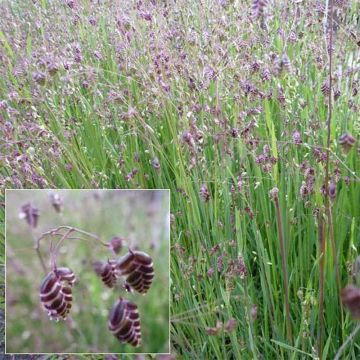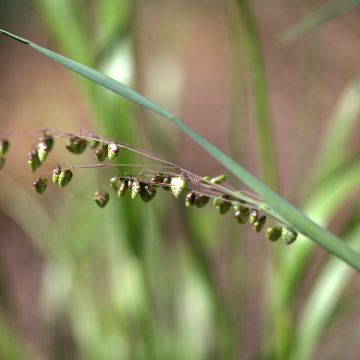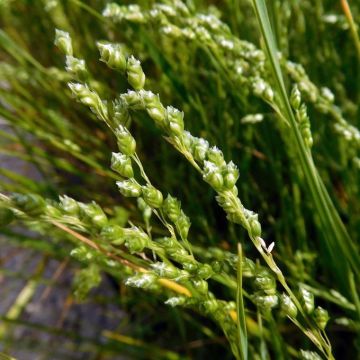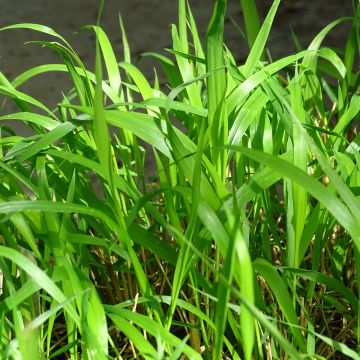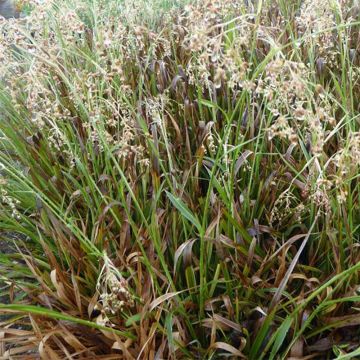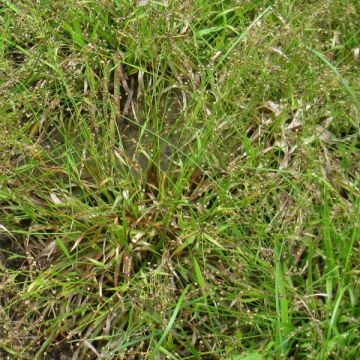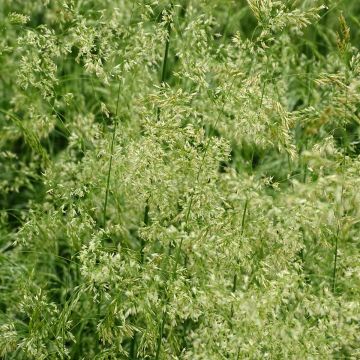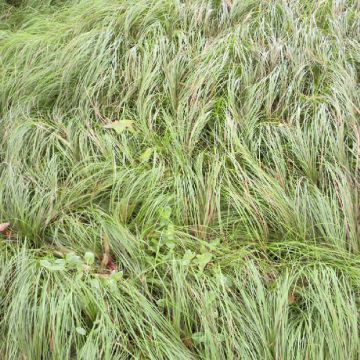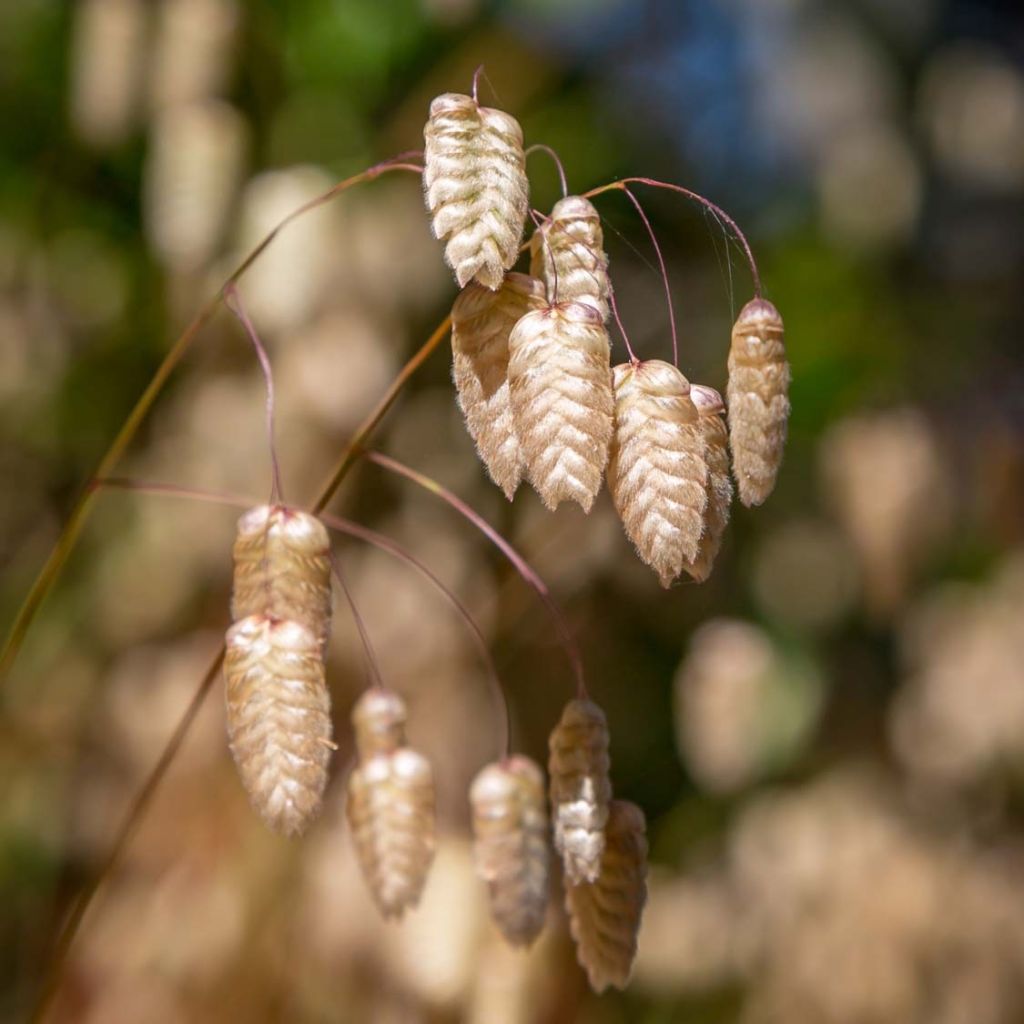

Briza maxima
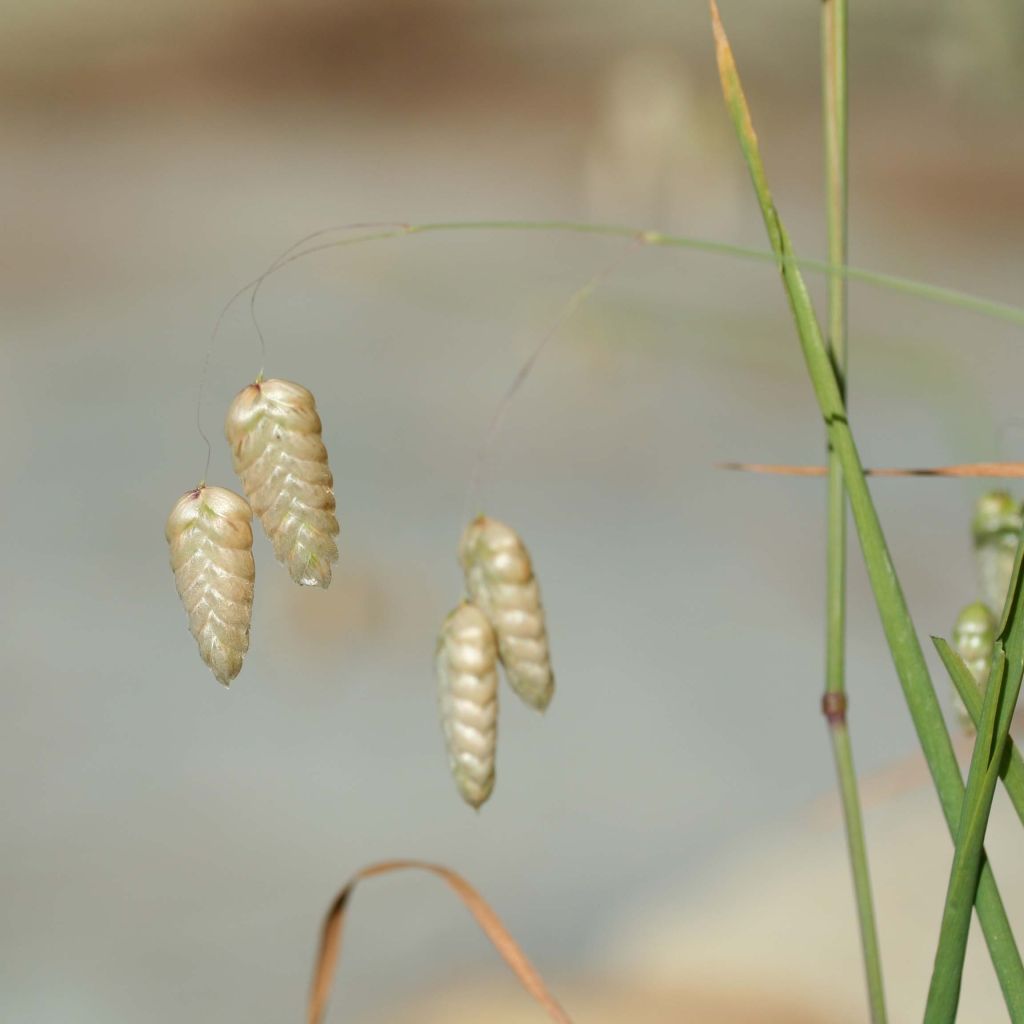

Briza maxima
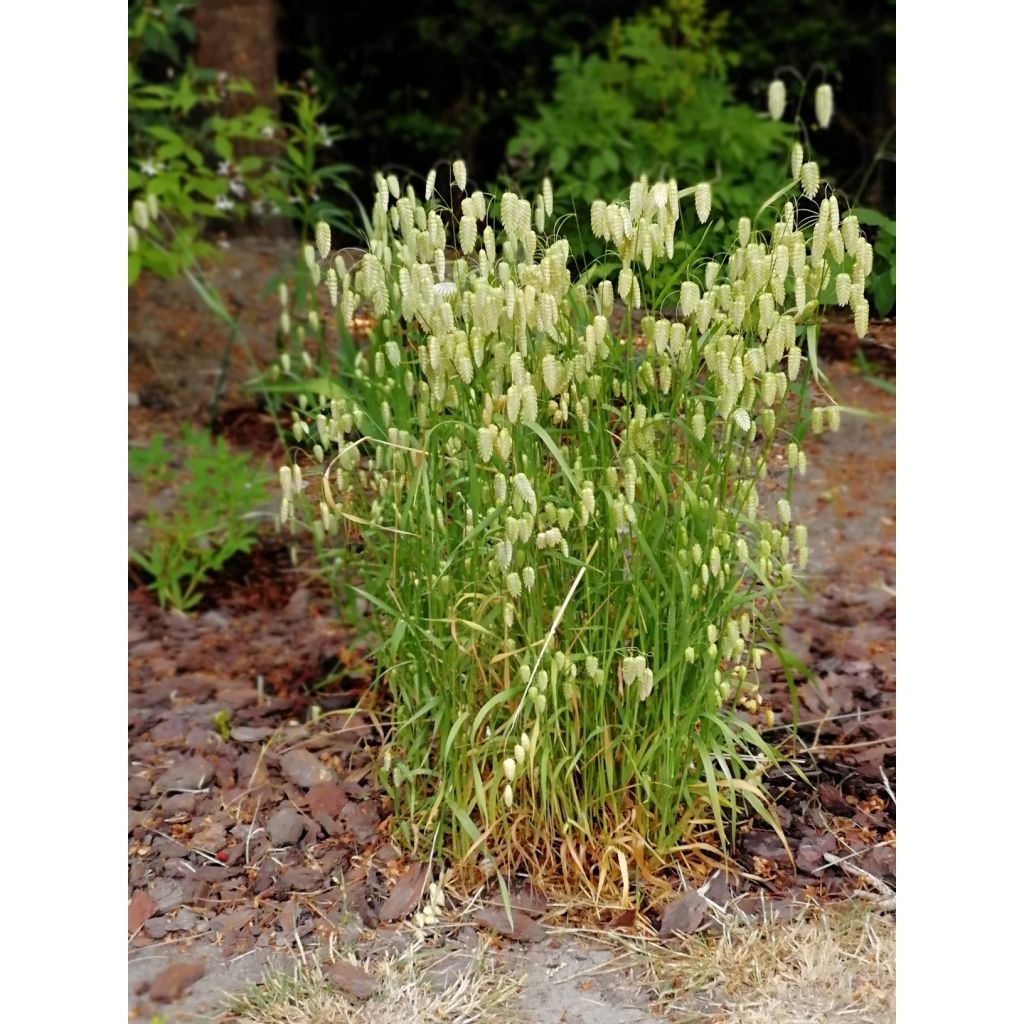

Briza maxima
Briza maxima
Briza maxima
Greater quaking grass, Pearl grass
This item cannot be shipped to the selected country
Dispatch by letter from €3.90
More information
Schedule delivery date,
and select date in basket
This plant carries a 6 months recovery warranty
More information
We guarantee the quality of our plants for a full growing cycle, and will replace at our expense any plant that fails to recover under normal climatic and planting conditions.
Seed-only orders are dispatched by sealed envelope. The delivery charge for seed-only orders is €3.90.

Does this plant fit my garden?
Set up your Plantfit profile →
Description
Nicknamed 'Tall Quaking Grass' or 'Great Quaking Grass', Briza maxima is a close relative of Briza media. This light grass develops a tuft of foliage that undulates in the wind. In summer, floral stems emerge from its foliage, bearing large, trailing spikelets shaped like hearts, transitioning from green to silver-white tinged with purple. Insensitive to difficult conditions, clinging to poor and dry soils, this plant self-seeds once and then reseeds with a friendly nonchalance in gardens that leave room for nature. It is also wonderful in dry or fresh bouquets.
Briza maxima is an herbaceous annual plant with fibrous roots belonging to the Poaceae family, like many grasses. This particularly hardy and undemanding grass is native to Southern Europe, North Africa, and Western Asia. The plant grows in tufts of flat, rough, linear, light green leaves. In a few months, it will measure 50 to 60cm (20 to 24in) in all directions. The foliage is evergreen in winter for autumn sowings. From May to July, depending on the sowing date and climate, inflorescences appear, sparsely branched, with long capillary and arched branches, each carrying 1 or 2 scaly spikelets of characteristic shape, resembling hearts. They are greenish in colour, then tinted with silvery-white and purple. At maturity, the spikelets take on a straw blonde colour. The seeds are dispersed by the wind and ensure the species' survival in the garden and in nature.
The great quaking grass is a perfect plant for every situation, due to its easy cultivation and graceful flowering. This grass accompanies flowering and light perennials and annuals, such as linarias, penstemons, field daisies, damask nigellas, cosmos, or annual poppies. The dark foliage of Cotinus 'Royal Purple' or Physocarpus 'Diabolo' will highlight its dancing spikelets. Sow it along a path, in a rockery, along a patio, or in a large pot, grouping several plants. Choose a location illuminated by the sun in the late afternoon: swept by the wind and crossed by twilight, it always offers a magical spectacle. It looks wonderful in dry bouquets.
Report an error about the product description
Briza maxima in pictures
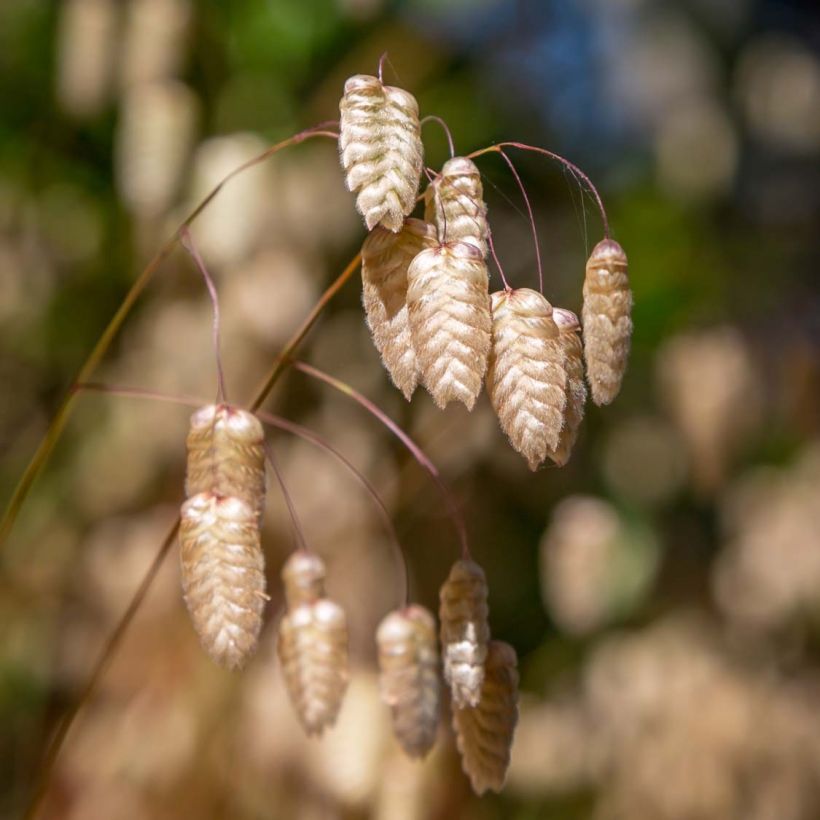

Flowering
Foliage
Plant habit
Botanical data
Briza
maxima
Poaceae
Greater quaking grass, Pearl grass
Mediterranean
Other Briza
Planting and care
Sow Briza maxima directly in the open ground in March-April or September-October. In nature, this is how the plant ensures its propagation. Fresh seeds undergo a cold period during winter, breaking their dormancy and germinating in spring. Spring sowings should be done with seeds that have been cold-treated for at least one month (for example, in the vegetable drawer of the refrigerator). Germination can be slow. Plants sown in autumn will flower in spring, while those sown in spring will flower a little later, in summer.
Cultivation:
Plant Briza maxima in full sun, in light, even dry and poor, rocky or sandy, well-drained soil. This grass adapts to very acidic soils but also tolerates limestone. A lovely plant that thrives easily, without any problems or maintenance.
Sowing period
Intended location
-
, onOrder confirmed
Reply from on Promesse de fleurs
Ornamental grasses
Haven't found what you were looking for?
Hardiness is the lowest winter temperature a plant can endure without suffering serious damage or even dying. However, hardiness is affected by location (a sheltered area, such as a patio), protection (winter cover) and soil type (hardiness is improved by well-drained soil).

Photo Sharing Terms & Conditions
In order to encourage gardeners to interact and share their experiences, Promesse de fleurs offers various media enabling content to be uploaded onto its Site - in particular via the ‘Photo sharing’ module.
The User agrees to refrain from:
- Posting any content that is illegal, prejudicial, insulting, racist, inciteful to hatred, revisionist, contrary to public decency, that infringes on privacy or on the privacy rights of third parties, in particular the publicity rights of persons and goods, intellectual property rights, or the right to privacy.
- Submitting content on behalf of a third party;
- Impersonate the identity of a third party and/or publish any personal information about a third party;
In general, the User undertakes to refrain from any unethical behaviour.
All Content (in particular text, comments, files, images, photos, videos, creative works, etc.), which may be subject to property or intellectual property rights, image or other private rights, shall remain the property of the User, subject to the limited rights granted by the terms of the licence granted by Promesse de fleurs as stated below. Users are at liberty to publish or not to publish such Content on the Site, notably via the ‘Photo Sharing’ facility, and accept that this Content shall be made public and freely accessible, notably on the Internet.
Users further acknowledge, undertake to have ,and guarantee that they hold all necessary rights and permissions to publish such material on the Site, in particular with regard to the legislation in force pertaining to any privacy, property, intellectual property, image, or contractual rights, or rights of any other nature. By publishing such Content on the Site, Users acknowledge accepting full liability as publishers of the Content within the meaning of the law, and grant Promesse de fleurs, free of charge, an inclusive, worldwide licence for the said Content for the entire duration of its publication, including all reproduction, representation, up/downloading, displaying, performing, transmission, and storage rights.
Users also grant permission for their name to be linked to the Content and accept that this link may not always be made available.
By engaging in posting material, Users consent to their Content becoming automatically accessible on the Internet, in particular on other sites and/or blogs and/or web pages of the Promesse de fleurs site, including in particular social pages and the Promesse de fleurs catalogue.
Users may secure the removal of entrusted content free of charge by issuing a simple request via our contact form.
The flowering period indicated on our website applies to countries and regions located in USDA zone 8 (France, the United Kingdom, Ireland, the Netherlands, etc.)
It will vary according to where you live:
- In zones 9 to 10 (Italy, Spain, Greece, etc.), flowering will occur about 2 to 4 weeks earlier.
- In zones 6 to 7 (Germany, Poland, Slovenia, and lower mountainous regions), flowering will be delayed by 2 to 3 weeks.
- In zone 5 (Central Europe, Scandinavia), blooming will be delayed by 3 to 5 weeks.
In temperate climates, pruning of spring-flowering shrubs (forsythia, spireas, etc.) should be done just after flowering.
Pruning of summer-flowering shrubs (Indian Lilac, Perovskia, etc.) can be done in winter or spring.
In cold regions as well as with frost-sensitive plants, avoid pruning too early when severe frosts may still occur.
The planting period indicated on our website applies to countries and regions located in USDA zone 8 (France, United Kingdom, Ireland, Netherlands).
It will vary according to where you live:
- In Mediterranean zones (Marseille, Madrid, Milan, etc.), autumn and winter are the best planting periods.
- In continental zones (Strasbourg, Munich, Vienna, etc.), delay planting by 2 to 3 weeks in spring and bring it forward by 2 to 4 weeks in autumn.
- In mountainous regions (the Alps, Pyrenees, Carpathians, etc.), it is best to plant in late spring (May-June) or late summer (August-September).
The harvesting period indicated on our website applies to countries and regions in USDA zone 8 (France, England, Ireland, the Netherlands).
In colder areas (Scandinavia, Poland, Austria...) fruit and vegetable harvests are likely to be delayed by 3-4 weeks.
In warmer areas (Italy, Spain, Greece, etc.), harvesting will probably take place earlier, depending on weather conditions.
The sowing periods indicated on our website apply to countries and regions within USDA Zone 8 (France, UK, Ireland, Netherlands).
In colder areas (Scandinavia, Poland, Austria...), delay any outdoor sowing by 3-4 weeks, or sow under glass.
In warmer climes (Italy, Spain, Greece, etc.), bring outdoor sowing forward by a few weeks.

































